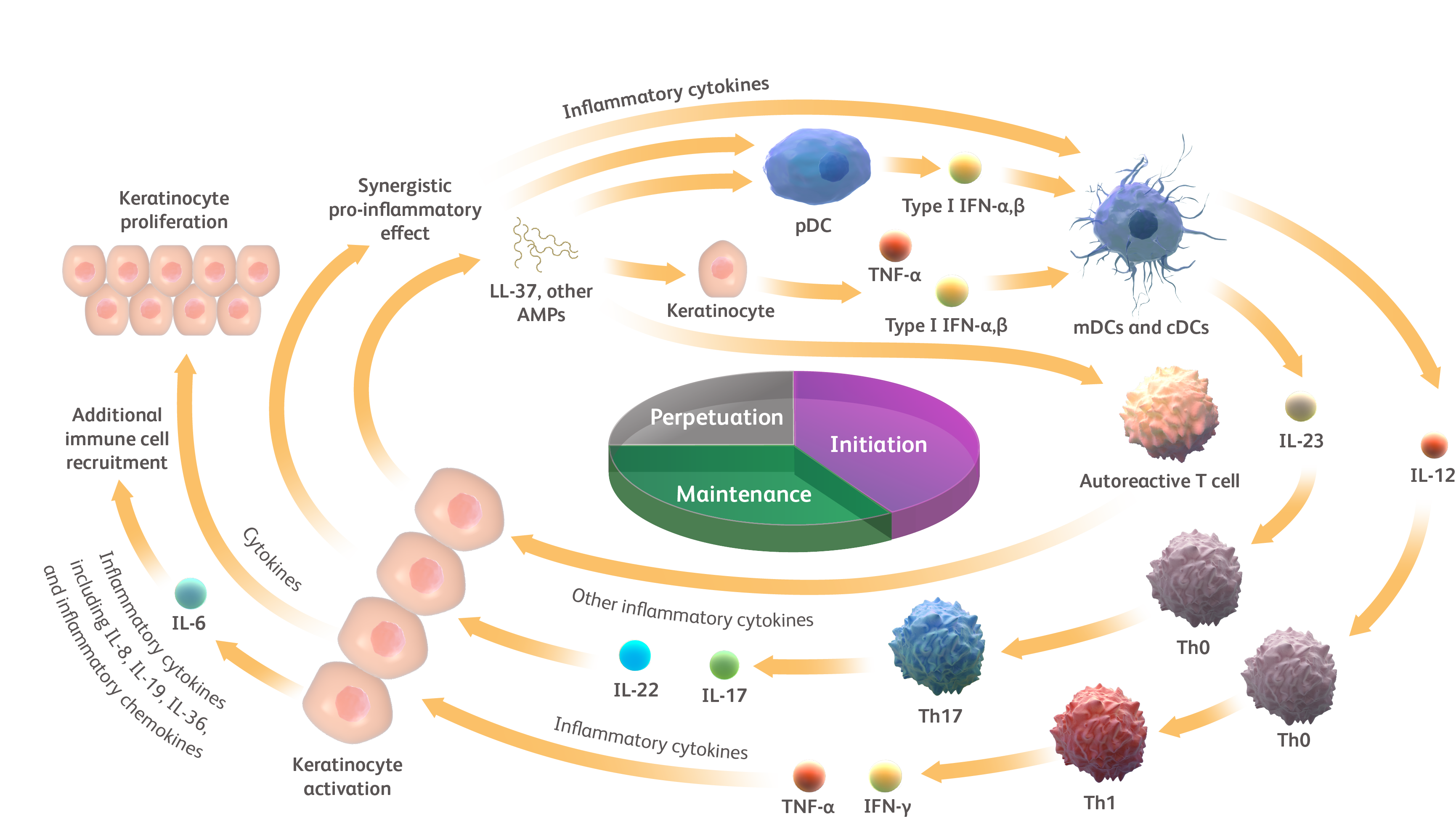more than a skin disease
References
- Zhang LJ. Front Immunol. 2019;10:1440.
- Greb JE et al. Nat Rev Dis Primers. 2016;2:16082.
- Korman NJ. Br J Dermatol. 2020;182:840−848.
- Hanada T, Yoshimura A. Cytokine Growth Factor Rev. 2002;13:413−1.
- Nelson DL, Cox MM. Lehninger Principles of Biochemistry. 6th ed. WH Freeman; 2012.
- Hawkes JE et al. J Allergy Clin Immunol. 2017;140:645−653.
- Nestle FO et al. J Exp Med. 2005;202:135−143.
- Afonina IS et al. Cell Mol Life Sci. 2021;78:2709−2727.
- Lee E et al. J Exp Med. 2004;199:125−130.
- Li H et al. Nat Commun. 2018;9:1420.
- Banerjee S et al. Drugs. 2017;77:521−546.
- Chen K et al. J Autoimmun. 2017;83:1−11.
- Alwan W, Nestle FO. Clin Exp Rheumatol. 2015;33:S2−S6.
- Hawkes JE et al. J Immunol. 2018;201:1605−1613.
- Tollenaere MAX et al. Br J Dermatol. 2021;185:585−594.
- Rendon A, Schäkel K. Int J Mol Sci. 2019;20:1475.
- Benham H et al. Arthritis Res Ther. 2013;15:R136.
- Ritchlin CT et al. New Engl J Med. 2017;376:957−970.
- Boutet MA et al. Int J Mol Sci. 2018;19:530.
- Von Stebut E et al. Front Immunol. 2020;10:3096.
- Feng Y et al. Thromb Haemost. 2018;118:1885−1894.
- de Souza HSP, Fiocchi C. Nat Rev Gastroenterol Hepatol. 2016;13:13−27.
- Hao Y et al. Front Immunol. 2021;12:711060.
- Mantovani A et al. Int J Mol Sci. 2016;17:217.






